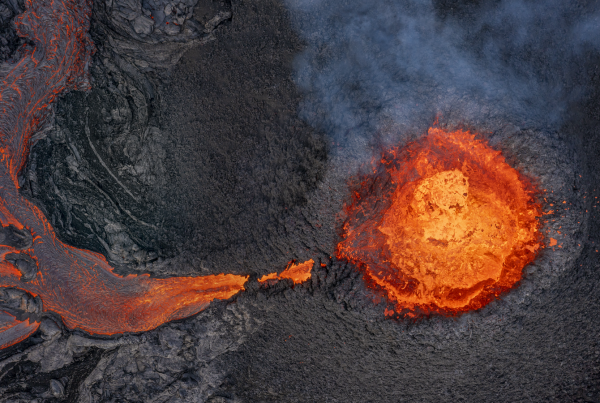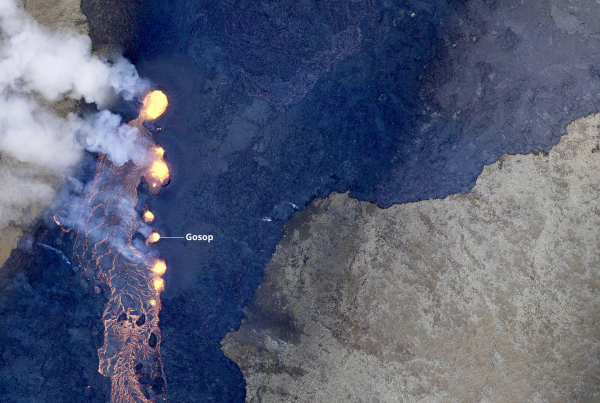By Ari Trausti Guðmundsson.

Öræfajökull Volcano.
With an average interval of between 200 to 300 years (looking a few thousand years back), large volcanic eruptions do occur in Iceland. They are more serious events than we have witnessed in the 20th and 21st centuries. The volume of compact lava can exceed ten cubic kilometres (or ten billion cubic metres) or a volume of a few cubic kilometres of loose, airborne eruptive rocks, termed tephra (i.e. ash, pumice, scoria and lava bombs). The fierceness or “explosiveness” is estimated within an index-frame (the logarithmic VEI-scale from 0-8) by looking at certain features of an eruption such as the volume of erupted material and the activity time frame.
Basically, the large eruptions in Iceland are of two major types. Some are eruptions of mainly lava, but also some tephra, from fissures within volcanic systems of the rift zones that cut through the island from SW to NE. While active, such 10 to 30-km-long fissures display lava fountain activity that may last for many months or even longer. An example would be the Laki eruption in 1783-1784. It lasted for eight months in the Grímsvötn Volcanic System. A similar fissure eruption occurred close by, in 934 (the Eldgjá eruption), confined to the Katla Volcanic System. It lasted at least two years. The other type of powerful eruptions occurs in the large, high-rise volcanoes that are activity centres of volcanic systems. Such eruptions may last for only a few hours or days, causing very high columns of steam, gas, ash and pumice, flash floods (jökulhlaups) or glowing avalanches. Other examples from historical times are the eruptions of Hekla in 1104, Öræfajökull (1362), and Askja in 1875.
Still larger eruptions do occur, spaced in time by millenniums, in the central volcanoes. These events can sometimes be associated with the senile throes of old volcanoes; enormous explosive events that partly destroy the volcano (Mt. St. Helens-type) or they stem from explosive eruptions and rapid large-scale subsidence (swift caldera formation) in younger volcanoes. Examples are the cataclysmic eruption in the Torfajökull Volcanic System about 55,000 years ago, a forceful eruption in Katla about 12,000 years ago and more than one large eruption in Grímvötn around 10,000 years ago.
Volcano tours by our partners



